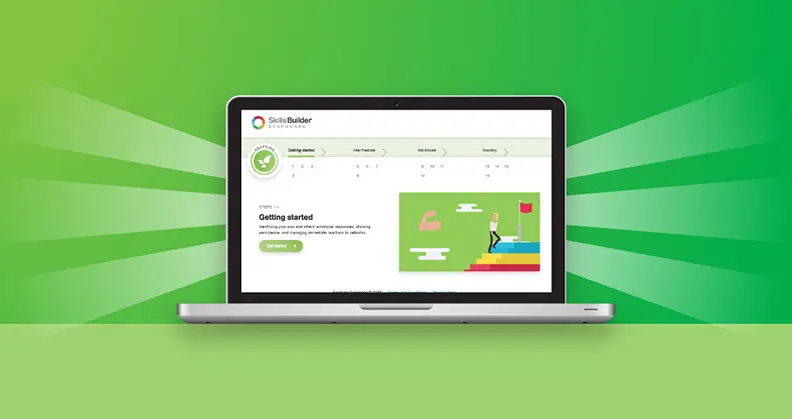Strategic planning is vital for any organisation that wants to thrive in today’s competitive landscape. When it comes to solving complex problems, strategic plans can provide a roadmap that guides your team towards a shared goal.
In the workplace, managers will often need to dig into the detail of strategic plans. For example, they will need to identify the tasks to be completed, the order they should be completed in, the people that should complete them, and the resources required in terms of time and cost. Mastering these problem solving skills is therefore an important part of any leader’s professional development.
What is a strategic plan?
A strategic plan is a systematic approach to achieving a purpose or a goal, for example when solving a complex problem. Strategic plans could be set at an organisational level, but they can also be more focused and targeted.
Four steps to create a strategic plan:
- Define your purpose
The starting point of any strategic plan has to be a clear statement of purpose: what are you working to achieve? What’s the problem, or the part of the problem, that you’re trying to solve? Your purpose can be quite broad, but it should also be tangible. For example, you might aim to become the leading trainer company for teenagers, or to boost your team’s sales by 5%.
- Analyse the problem
The next step in creating a strategic plan is to bring together all the research and analysis that you have done, to better understand the complex problem that you are trying to solve. This should include the primary and secondary research that you’ve carried out, and the causes and effects that you identified.
Consider the solutions that you have suggested and evaluated, and the logic that suggests your approach should be successful. By analysing these factors, you should be able to form a clear rationale for your approach.
- Define your approach
Once you’ve analysed the problem, decide what you will do to address it. You might suggest a series of hypotheses to test to reach the optimal approach.
For instance, you might become the leading trainer company for teenagers by tracking the trends you can see on social media, copying the designs that are successful, and promoting your products through Instagram influencers.
- Consider resources and structure
Once you’ve decided on a broad approach to reach your goals, it’s important to identify the tasks that need to be completed, and the order they should be completed in. You should also consider the resources needed to complete the tasks, and the structure of individuals and tasks that will make your plan successful.
How do I know if my strategic plan is successful?
When designing your strategic plan, you will have considered your overarching purpose or ‘mission statement’. Ultimately, the success of your strategic plan will come down to whether you have solved the complex problem that you set out to solve.
However, sometimes this can take months or even years; in the meantime, you can use targets and milestones to monitor your progress towards your goals. By writing targets and milestones into your strategic plan, you can feel more ‘in control’ and avoid any nasty surprises.
Setting SMART targets
SMART targets are a tangible way of tracking your progress and gauging whether you’ve been successful in achieving your goal. The targets that you create should help capture an important part of what you are trying to achieve. Your targets should always be SMART:
- Specific - they clearly explain what you are trying to do
- Measurable - you can measure whether you’ve met the target or not
- Achievable - they should not be too hard or too easy
- Realistic - you should be honest about whether you are capable of achieving them
- Timed - you should know when they need to be done by
Setting milestones
If your strategic plan is going to take a year or more to implement, it is important to check whether you are on track to meet your SMART targets. This is where milestones come in useful. Milestones are like markers or checkpoints along the route to achieving a goal. You can use milestones as reassurance that you are on the right path, or to make adjustments to your plan if you’re going off that path.
Like targets, milestones should follow the SMART principles, but they might be more incremental towards the overall goal. For example, if my target were to sell 40,000 pairs of trainers by the end of the year, a milestone would be to sell 10,000 pairs in three months. If, after three months, I haven’t met this milestone, I will know that I need to adapt my approach. Using milestones means you have plenty of leeway to make changes if your plan isn’t on track.
How can I learn from my strategic plans?
Managers and leaders with advanced problem solving skills will not only make plans and track their progress against their goals; they will also learn from the process of implementing the plan. These learnings can then be used to help solve the complex problem.
As you review the progress of your plan, there are four areas that you can monitor and learn from:
- Learn from operational challenges
Sometimes, when implementing a plan, you will face operational challenges. For example, you may not have been able to secure the necessary resources, some tasks may have been completed incorrectly, or your efforts may have been undermined by external factors. Whilst these challenges are frustrating, they also allow us to learn and adapt our plans accordingly. For example, you may realise that you need to secure additional resources, move timelines or milestones, or change some of the tasks you had planned. By regularly reviewing your progress against milestones, you can spot these operational challenges early on and make any necessary changes to your plan.
- Learn from impact challenges
Sometimes, when you’re implementing a strategic plan, it might not lead to the outcomes that you were expecting - even if you’re delivering the operational plan to the letter. For example, you might deliver your marketing strategy perfectly, but not see the uptick in trainer sales that you had predicted.
At this point, it’s important to use this challenge as a learning opportunity: what was it in the original model that you produced that was wrong? What were the logical assumptions that didn’t hold up? Were any of your hypotheses disproved?
If you are open to this sort of learning, you can revisit some of your initial assumptions, improve them with what you see in reality, then adjust your strategic plan accordingly to get back on track to meet your goals.
- Learn about unanticipated secondary effects
Complex problems are just that -- complex. They don’t have simple solutions. Instead, there are often complexities and interdependencies between parts of a problem. Sometimes, this can mean that by solving one part of the problem, you inadvertently generate more problems elsewhere. These are known as secondary effects. Ideally, we should consider these early in the planning process, but sometimes they cannot be predicted.
Therefore, while implementing your strategic plan, it’s important to keep scanning for unanticipated secondary effects which could undermine the effectiveness of what you are trying to achieve. In order to spot secondary effects, it can be useful to check in with people you are working with, or look at the broader social or environmental effects of what you are doing.
- Learn through testing hypotheses
Finally, as your strategic plan progresses, you will have the chance to test different hypotheses that you developed around the complex problem that you are trying to solve. To make this learning as valuable as possible, you should seek out early opportunities to test hypotheses on a small scale through carefully controlled tests, like A/B testing. For example, if you hypothesise that your target market responds best to video adverts, you would seek to test this hypothesis on a small focus group before investing in filming an advert. This learning will ensure that as your plan develops, it’s doing so on a strong foundation of evidence.
How can I support my team to develop their strategic planning skills?
The ability to create and implement strategic plans is an advanced problem solving skill. To support your team to build this skill, you could:
- Model an example of a strategic plan to show its features.
- Explain to an individual when it might be useful to develop a strategic plan, linked to their areas of responsibility.
- Task an individual to identify where they might find it useful to implement a strategic plan in their work. This might involve a discussion about the complex problems an individual is facing.
- Reflect with the individual about where they can find good examples of strategic plans ‘in action’ that they could use to help them form their own.
To support their professional development, you may also encourage your team members to seek out opportunities to practise this skill, for example working on long-term projects where there is a need to take a systematic approach to address a complex problem.
Learn more about problem solving skills here, or self-assess your skills here.






